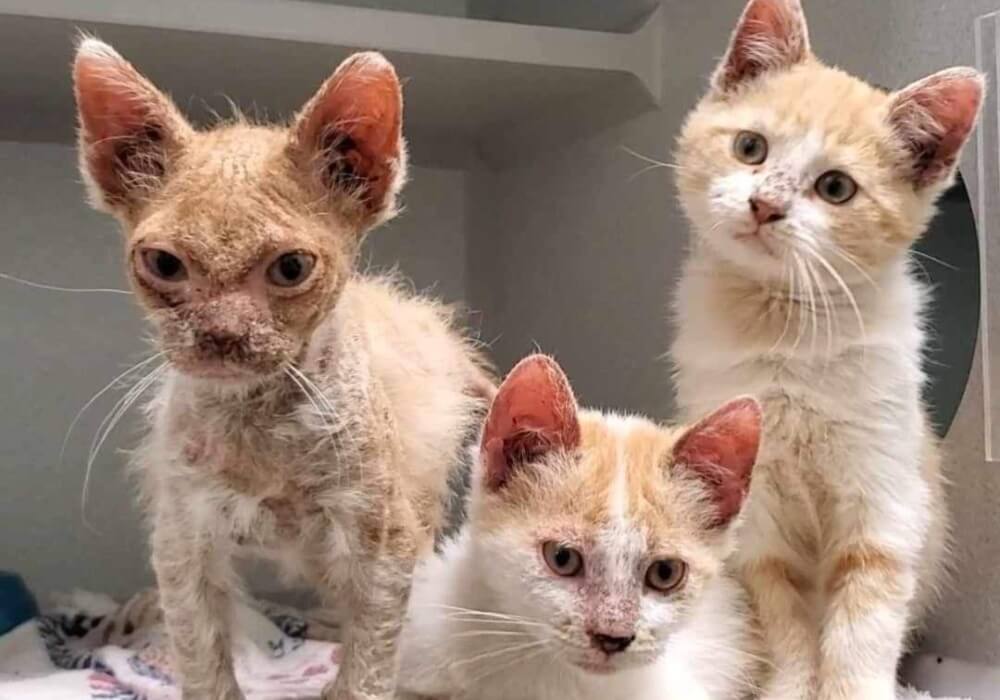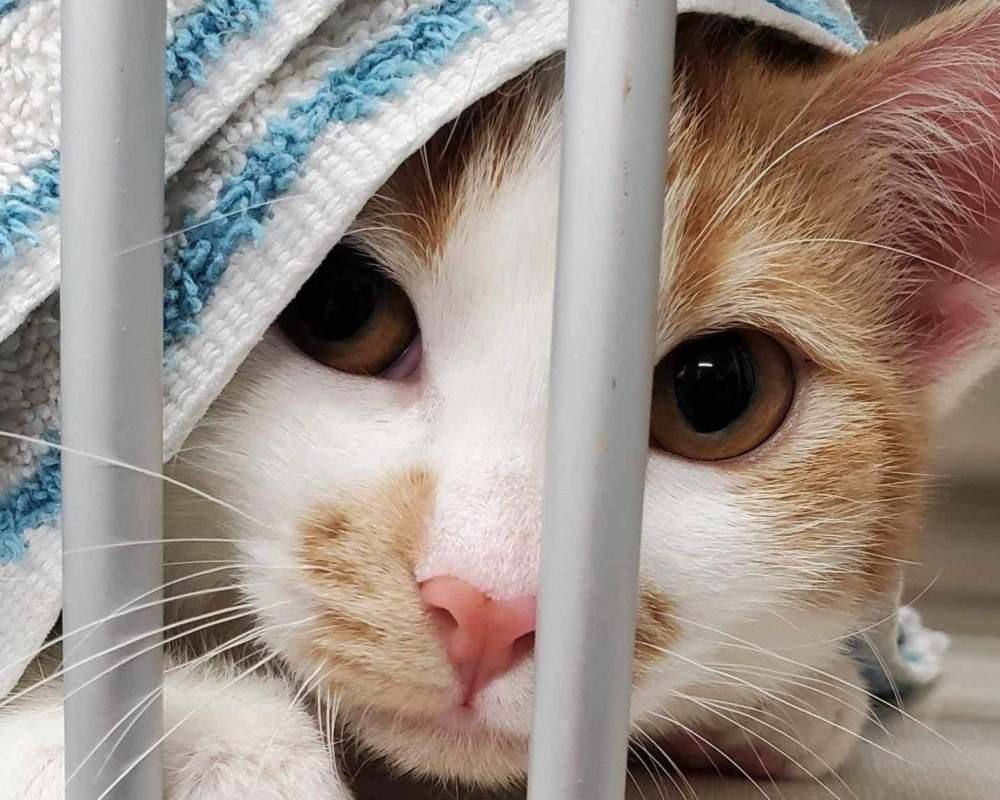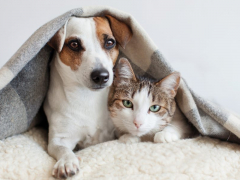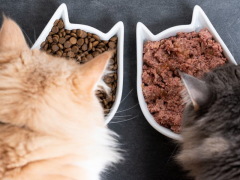
The kittens, recovered, at Emmet County Animal Shelter. They’re snuggling together in this order from front to back: Daria, Boey, and Cricket. Image courtesy of Kristy Henning and Lindsey Rohrbaugh
Kristy Henning, the director of Emmet County Animal Shelter, had stepped out of the shelter for a minute to bring a cat to a nearby vet, only a short distance away in the tiny town of Estherville, Iowa. When she returned, she found three ringworm-ridden kittens in the shelter’s entryway. She remembers the day clearly. “It was late October. I was already having a bad day. I was running short on time and energy … and I’d only been gone minutes when I walked in on these guys sitting on the rug. I was just livid.”
“They were in horrible condition,” she adds. “And the fact that [someone had] dropped off cats with a highly contagious communicable disease at an animal shelter and just left them there, with no note, no nothing, no sorry, not even in a container, just plunked them on the rug. I felt very defeated. I didn’t even have to backlight them to know they had ringworm.”
Assessing the Scene and Taking Action

The kittens when they first came to Emmet County Animal Shelter. From left to right, Boey, Cricket, Daria. Image courtesy of Kristy Henning and Lindsey Rohrbaugh
Ringworm is especially common in kittens. Henning knew she needed to be cautious and act fast to avoid spreading the disease to other animals in the clinic. She also couldn’t tell if the kittens were going to be friendly or not.
The shelter has a triple entryway and keeps the first entryway intentionally unlocked so people can drop off donations and, yes, animals. “It’s not something we like, it’s not something we hope happens, but it’s better than leaving them tied up outside,” Henning explains. “We’ve had animals left in carriers … on nights we had a storm. We come back the next day, and there’s a poor cat that’s been sitting in a rainstorm overnight. So we [leave the first entryway open] intentionally.”
Henning grabbed gloves and a carrier, picked up the extremely friendly kittens, and set them in the shelter’s isolation room. She then quickly gathered everything in the entryway and sanitized it because unless she did so, the next person inside would end up walking through a big cloud of ringworm spores and into the shelter, which was the last thing the shelter needed.
After sanitizing the entryway, Henning evaluated the kittens and got their sulfur baths started.
“My heart quickly melted from angry and frustrated into poor little babies that obviously had been living like this for a long time, let me help you now,” says Henning. “They were actually as sweet as can be from the moment that we got them. Obviously, someone had them in their home and had been taking care of them.”
The Kittens’ Healing Journey
Their transformation was nothing short of remarkable, especially for the male sibling, Boey, whose ringworm was so bad he almost looked like a burn victim. All three siblings—named Boey, Daria, and Cricket by the shelter—have been inseparable since their arrival. “We’ve had them in and out of isolation a few times during their young lives with us due to ongoing immune system issues,” explains Henning. “We actually put all three of them in together because we tried to separate them, but they don’t like that.”

Cricket peeking out from beneath a blue and white striped blanket at Emmet County Animal Shelter, after recovering from ringworm.
At one, Boey, Daria, and Cricket are healthy now, though on the small side. “All three are so sweet,” Henning says. “Boey is the most outgoing, while the two sisters are relaxed and sweet and so loving. They’re all just really playful and gentle.”
“They’re really special to us probably partly because they were in such bad shape, and it took such a long time for them to get better and to heal,” explains Henning. “They’re always cuddled up together and acting silly.”
The siblings are still awaiting adoption, and now that they’ve made a full recovery, Henning hopes that will happen soon. While she would love to see them go to a new home together, she knows it’s challenging to adopt three at the same time. The shelter has done it twice before. “They’re so awesome,” she adds, “and they really do love each other.”



